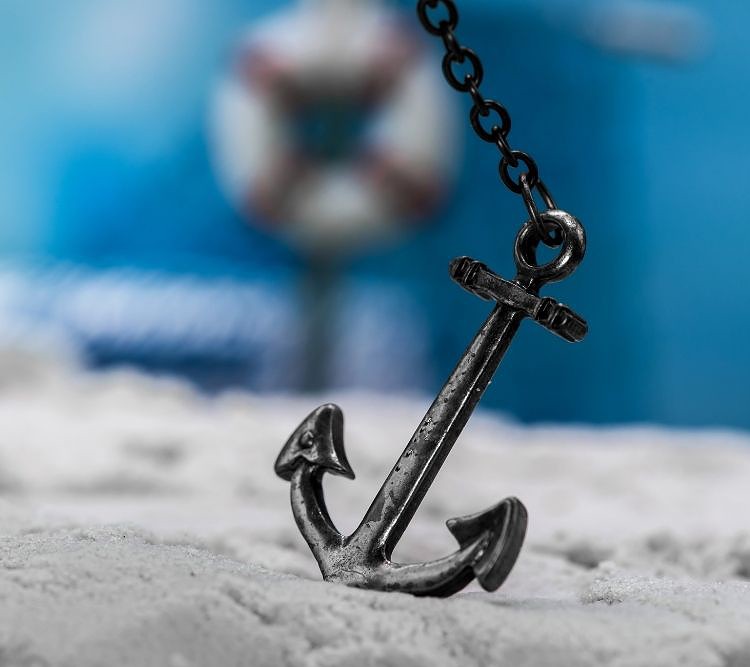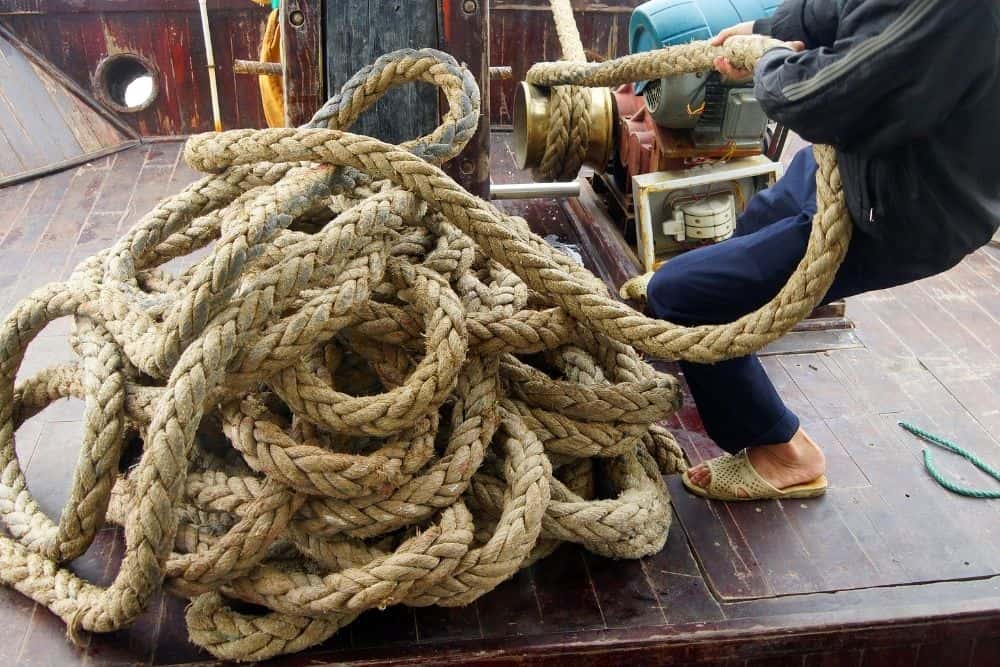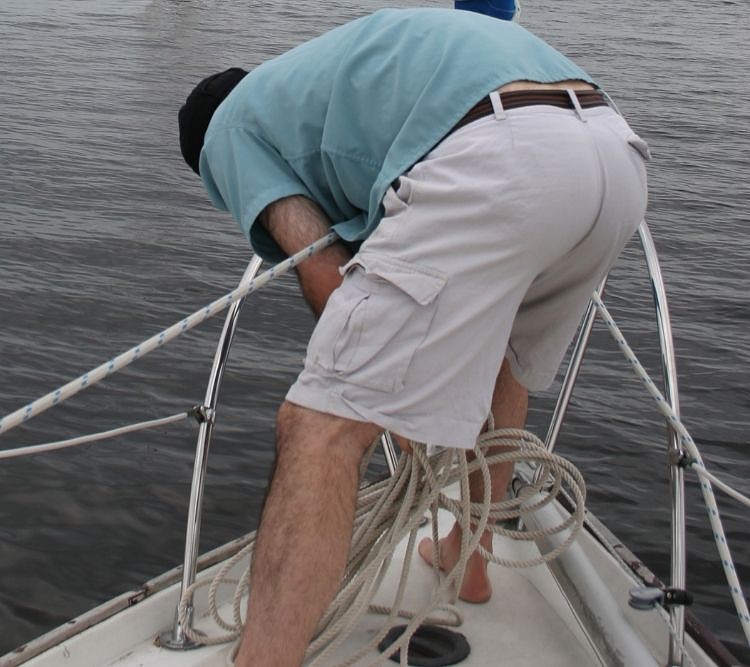When it comes to factors that affect fishing, one that is usually found lower on the list is boat control. Some anglers find this shocking because of how important positioning and control are to a successful fishing trip.
Boat control and positioning have come so far from what they used to be just a couple of decades ago. Fighting the wind and current has never been easier.
Anglers no longer have to rely solely on traditional anchors and drift socks thanks to the various other options available to them. Two such options are using trolling motors and anchors.
Trolling motors and anchors are both used for controlling a boat’s position by fighting back against forces such as wind and currents but they do so in different ways – keep reading to learn how different these methods are.
Table of Contents
What Is an Anchor?

An anchor is a weight that is used to ground a vessel in the water to prevent it from drifting.
Anchoring technology has made great strides over the past years, making them a far cry from the cumbersome objects they used to be.
Manufacturers are no longer focusing on metal as the main material used in producing anchors – they have also started using carbon fiber and composites.
What Is a Trolling Motor?

Unlike an anchor, a trolling motor’s primary purpose is not to ground boats – it is to allow boats to travel from one point to the other without making too much noise and to maneuver boats with precision.
Anchoring is simply one of the extra features that modern trolling motors boast. From including fish finders to transducers and GPS, present-day trolling motors are more than just motors.
This was made even more obvious when Minn Kota introduced virtual anchoring to the world – to this day, people think of virtual anchors as “Spot-Lock” regardless of the brand being used.

Virtual anchoring is no longer limited to Minn Kota – most of the major players in the market have developed their own version of “Spot-Lock.” For Motorguide, this is “pinpoint GPS” and Rhodan calls their version “HD GPS anchor.”
Simply put, virtual anchoring uses GPS to lock a vessel into place and combats factors such as current and wind to ensure that the boat stays within a few feet of the locked position.
Trolling Motors vs. Anchors: A Comparison
Anglers have long debated each method’s advantages and disadvantages. Both are extremely different ways of tackling the same problem and should be compared on all aspects instead of simply as a whole.
Convenience/Ease of Use
Traditional anchors cannot beat trolling motors when it comes to convenience.
Virtual anchoring allows anglers to use remote controls or foot pedals to activate the anchor and is much more convenient than manually deploying an anchor.

Efficiency

Because virtual anchoring saves time, anglers can use this time preparing bait or fishing. Therefore, GPS anchors enable anglers to spend more time fishing than preparing to fish.
Using trolling motors for anchoring also makes packing up more efficient. Instead of exerting energy and retrieving the anchor, individuals can just turn the GPS anchoring feature off.
Cost

Traditional anchors are much more affordable than trolling motors, and don’t require a large upfront investment.
Trolling motors, on the other hand, are not only pricey, but also require maintenance and upkeep costs. However, some anglers opt for trolling motors despite this because of how versatile they are.
Uses
As mentioned previously, trolling motors offer anglers a variety of benefits while traditional anchors only serve a single purpose.
Having a versatile tool like a trolling motor can help anglers in countless other situations and even use GPS to let them return to specific fishing spots.
Suitability

Trolling motors are excellent for anchoring in both, deep and shallow water and minimize noise and disruption to marine life – this is one of the major reasons some anglers prefer them over traditional anchors.
Traditional heavy anchors also aren’t suitable for smaller boats (like kayaks) or boats that have a limited weight capacity (like inflatable boats). These boats benefit greatly from trolling motors and GPS anchoring.
Any traditional anchors used in these boats will have to be lightweight in order to stay below the maximum weight capacity.
Reliability
Traditional anchors are also more reliable than trolling motors since they require manual labor instead of depending on outside power.
Critics of trolling motors have argued that unforeseen circumstances and emergency situations that result in no power can render electric trolling motors useless. Anchors don’t require power and are more dependable.
Power
Not only does virtual anchoring use a lot of power, but it does so continuously. This kind of depletion isn’t an issue with traditional anchors.

That being said, there is a different kind of power that traditional anchors use – that of the angler themselves. Fatigue from dealing with heavy anchors all day can ruin a perfectly good fishing experience.
Noise/Stealth

Traditional anchors also run the risk of spooking fish and possibly missing them because the boat didn’t anchor on time. Virtual anchors like Spot-Lock are so quiet that anglers can sneak up on fish.
That being said, users should note that in particularly shallow waters, trolling motors can also alert fish to an individual’s presence. Even the quietist of trolling motors cannot control pressure and vibration, both of which can scare away fish.
Safety/Danger
Traditional anchoring isn’t just inconvenient – it can be downright dangerous. Using traditional anchors in rough weather conditions and deep water can result in injuries, especially if one makes a mistake calculating the anchor scope.
Strong currents also pose a risk to the angler in terms of slipping or losing control of heavy anchors.

Furthermore, heavy anchors have been known to disrupt marine life, and damage sea grass and coral. Trolling motors and GPS anchoring don’t face this issue.
Conclusion
This concludes our comparison of trolling motors and traditional anchors. While both are useful in their own ways, they clearly outweigh each other in individual areas.
Since both have their strengths and weaknesses, the right option will differ from angler to angler. To determine which is the right option for you, check out our comparison table below.
| Trolling Motor | Anchor | |
| Convenience | √ | |
| Efficiency | √ | |
| Cost | √ | |
| Uses | √ | |
| Suitability | √ | |
| Reliability | √ | |
| Power Use | √ | |
| Stealth | √ | |
| Safety | √ |
For more information on trolling motors and their use of “Spot-Lock”, check out this article. We also cover how to use an anchor on an inflatable boat here.

I created this site to help people – to help you – with your boat problems. Instead of helping one person at a time, I want this website to be the “one-stop-shop” for everyone’s boating concerns. Read more.

